#el burlador de Sevilla y el convidado de piedra
Explore tagged Tumblr posts
Text
I just fell asleep in an incredibly boring and surface level physics presentation but because I was still hearing the presentation in my dream I was Lazarillo de Tormes and the presenter was Duque Octavio from El Burlador de Sevilla and if that is not the wildest combination of characters to be in a physics lecture I don’t know what is
8 notes
·
View notes
Note
what are some spanish books you'd recommend? (i'm probably about a high schooler in terms of reading comprehension, but if you have any difficult/gritty recommendations, that would be perfect) muchos gracias :D
(An anon sent in a similar question looking for B1/B2 level books)
One of the better contemporary authors of what you might consider YA fiction is Laura Gallego García so I'd recommend her especially if you like fantasy.
I first found about her from Las memorias de Idhún. If you're on Netflix, you can see an anime based on it called "The Idhun Chronicles" - and one of the main actresses is Michelle Jenner who is an extremely well-known Spanish actress [she played Isabel in the well-known historical drama Isabel about the Catholic Monarchs in Reconquista times]
If anyone has any other suggestions, please write them in
Other books/stories you might like:
Esperanza renace by Pam Muñoz Ryan
Como agua para chocolate by Laura Esquivel
La casa en Mango Street by Sandra Cisneros
La sombra del viento by Carlos Ruiz Zafón [fairly advanced]
La casa de los espíritus by Isabel Allende [somewhat advanced]
El Conde Lucanor by Don Juan Manuel [advanced at times; but it's styled like fables or multiple short stories]
El burlador de Sevilla y el convidado de piedra by Tirso de Molina [advanced at times with language, but very easy to follow; also a play]
I would also say look into translations of things like Harry Potter, Percy Jackson, or Hunger Games [Los juegos del hambre] and other YA fiction that is more geared towards highschoolers and teenagers because the language used is not as complex but still really useful. Also, many 1st person novels are really good for showing you the yo forms of a lot of verbs especially irregular verbs.
Also some people really recommend El alquimista "the Alchemist" in the Spanish version by Paulo Coelho. It's a very well-known book for high schoolers though it is somewhat advanced in places
PS Also gotta recommend Hombres necios que acusáis by Sor Juana Inés de la Cruz. It's a poem, but it reads like the rawest slam poetry you've ever heard and also still frighteningly relevant in feminism
-
You may also enjoy short stories. If one author has multiple stories I'll just include the name once in the list. Some of these are translations of other short stories you'll probably know of which helps the comprehension better!
El rubí by Rubén Darío La ninfa El velo de la reina Mab La muerte de la emperatriz de China El palacio del sol
Blancanieves [Snow White] by the Brothers Grimm Rumpelstiltskin Pulgarcito [Tom Thumb] La Cenicienta [Cinderella]
Cuentos by Esopo [or, "Aesop's Fables"]
El barril de amontillado by Edgar Allan Poe Los crímenes de la calle Morgue La máscara de la muerte roja
El loco de Sevilla by Miguel de Cervantes [a story within a story; it's from Don Quixote, but it's a very well-known vignette in the novel] La pastora Marcela [also a story within a story; some frame of reference, Don Quixote is riding around and comes across a funeral and people are accusing a shepherdess Marcela of spurning this dude's love and he couldn't handle it - Marcela then appears out of nowhere and drags everyone and we love to see it]
Cine Prado by Elena Poniatowska
El regalo de los Reyes Mago [The Gift of the Magi] by O. Henry
La sirenita [The Little Mermaid] by Hans Christian Andersen
Caperucita Roja [Little Red Riding Hood] by Charles Perrault La Bella Durmiente [Sleeping Beauty]
Las mil y una noches [1001 Nights] by Anonymous
La muñeca menor by Rosario Ferré
El almohadón de plumas by Horacio Quiroga
La noche boca arriba by Julio Cortázar
Los dos reyes y los dos laberintos by Jorge Luis Borges
Biblioteca Digital Ciudad Seva
This is my usual go-to for reading classics translated into Spanish [there's also the Gutenberg Project if you're looking for ebooks]
Just some general advice:
-Anything by Cervantes is quite old and you will need to find a more modern version or you'll end up with some very antiquated spellings and grammar. He wrote Don Quixote and some other short stories/plays, and all of his mini-stories from Don Quixote are the same general difficulty.
-I do love Borges but for God's sake DO NOT read El jardín de los senderos que se bifurcan "The Garden of Forking Paths". It is advanced, and confusing even for native speakers. I mean this is a story people dedicate a thesis on to try and unravel. It's the kind of thing that you read, you read the wikipedia/rincón del vago entries, and reread and still get confused
-If you're feeling like you want a good challenge, try reading El Popol Vuh which is a book of Maya myths/history/etc, and it's an extremely important in indigenous cultures and history. People have called it the Maya Book of Genesis [though be aware the original translation was done by a Dominican friar named Francisco Ximénez, and there are some modernized versions]
...
Also, speaking of Rincón del Vago is like a Spanish version of Sparknotes. I'm not saying you should be using it to do your homework, but if you happen to find something like Alice in Wonderland / Alicia en el país de las maravillas you can read through the entry in Spanish as reading practice
#Spanish#langblr#recommendations#books#learning spanish#language#languages#learn spanish#asks#ref#refs#recursos
140 notes
·
View notes
Text

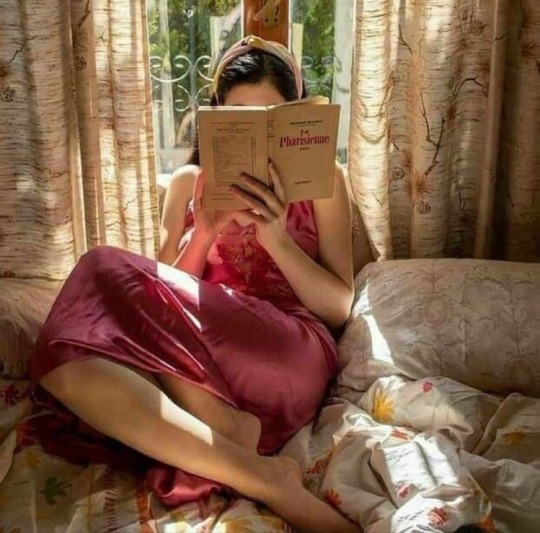
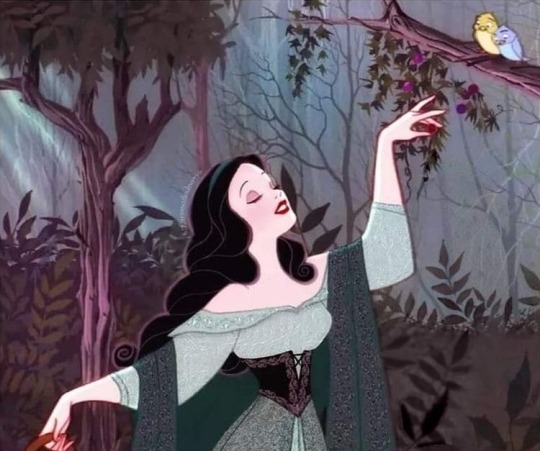
Reading List - Lista para Leer
Aves sin nido Clorinda Matto de Turner
Dom Casmurro Joaquim Maria Machado de Assis
Ariel José Enrique Rodó
El Moto Joaquin Garcia Monge
La amada inmóvil Amado Nervo
Desolación Gabriela Mistral
La señorita Etcétera Arqueles Vela
La vorágine José Eustasio Rivera
Doña Bárbara Rómulo Gallegos
Cuentos de Amor, de Locura y de Muerte Horacio Quiroga
Other selected works
Isabel Allende, “Dos palabras”
Anónimo, “Romance de la pérdida de Alhama”
Anónimo, Lazarillo de Tormes (Prólogo; Tratados 1, 2, 3, 7)
Gustavo Adolfo Bécquer, Rima LIII (“Volverán las oscuras golondrinas”)
Jorge Luis Borges, “Borges y yo”
Jorge Luis Borges, “El Sur”
Julia de Burgos, “A Julia de Burgos”
Miguel de Cervantes, Don Quijote (Primera parte, capítulos 1–5, 8 y 9; Segunda parte, capítulo 74)
Julio Cortázar, “La noche boca arriba”
Hernán Cortés, “Segunda carta de relación” (selecciones)
Sor Juana Inés de la Cruz, “Hombres necios que acusáis”
Rubén Darío, “A Roosevelt”
Don Juan Manuel, Conde Lucanor, Exemplo XXXV (“De lo que aconteció a un mozo que casó con una mujer muy fuerte y muy brava”)
Osvaldo Dragún, El hombre que se convirtió en perro
Carlos Fuentes, “Chac Mool”
Federico García Lorca, La casa de Bernarda Alba
Federico García Lorca, “Prendimiento de Antoñito el Camborio en el camino de Sevilla”
Gabriel García Márquez, “El ahogado más hermoso del mundo”
Gabriel García Márquez, “La siesta del martes”
Garcilaso de la Vega, Soneto XXIII (“En tanto que de rosa y azucena”)
Luis de Góngora, Soneto CLXVI (“Mientras por competir con tu cabello”)
Nicolás Guillén, “Balada de los dos abuelos”
José María Heredia, “En una tempestad”
Miguel León-Portilla, Visión de los vencidos (dos secciones: “Los presagios, según los informantes de Sahagún” y “Se ha perdido el pueblo mexica”)
Antonio Machado, “He andado muchos caminos”
José Martí, “Nuestra América”
Rosa Montero, “Como la vida misma”
Nancy Morejón, “Mujer negra”
Pablo Neruda, “Walking around”
Emilia Pardo Bazán, “Las medias rojas”
Francisco de Quevedo, Salmo XVII (“Miré los muros de la patria mía”)
Horacio Quiroga, “El hijo”
Tomás Rivera, . . . y no se lo tragó la tierra (dos capítulos: “... y no se lo tragó la tierra” y “La noche buena”)
Juan Rulfo, “No oyes ladrar los perros”
Alfonsina Storni, “Peso ancestral”
Tirso de Molina, El burlador de Sevilla y convidado de piedra
Sabine Ulibarrí, “Mi caballo mago”
Miguel de Unamuno, San Manuel Bueno, mártir

#lista para leer#catholic#feminine#reading list#Spanish reading list#spanish#reading#books to read#classic books
5 notes
·
View notes
Text
DON JUAN BURLADOR·
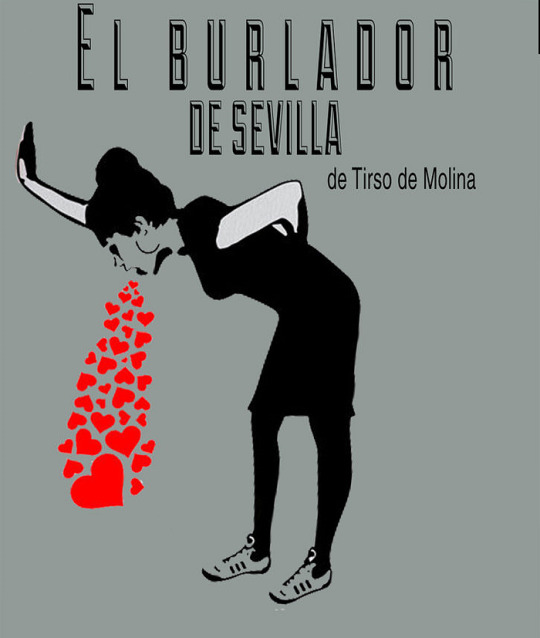
No hay dos sin tres. Saltando de “Tan largo me lo fiais” a “El burlador de Sevilla” a caer en “Don Juan Tenorio” nos podríamos desgañitar hasta el infinito si Zorrilla se inspiro en Tirso de Molina o plagio. Lo que no parece existir (mucho) dudas (hay algunos voces despistados o no, hay que darle ciertas creencias) es sobre la autoría del personaje del Sevillano Don Juan Tenorio. Este personaje fue plagiado de la vida misma, digamos, por Tirso de Molina quien le incorporo en la literatura universal del siglo de oro español. Si bien este o estos macho(s) ibérico burlador(es) de mujeres pone a las hembras ibéricas, quienes han parido estos machos y a todos los demás mamíferos, a nivel de cachondas fingiendo virtudes, por no decir putas, nos encontramos ante la dicotomía de los sexos, quien se burlo de quien, sibilinas que son.
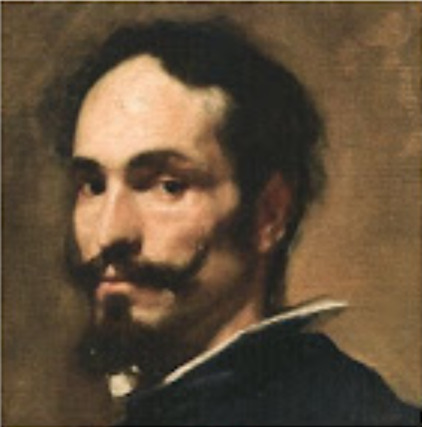
El burlador de Sevilla — ¡¡RESUMEN POR ACTOS!! (unprofesor.com)
El burlador de Sevilla: resumen y comentario de texto — Espaciolibros.com
youtube
(649vid1) https://youtu.be/mSLOmfjMb7g Estudio 1 TVE — El Burlador De Sevilla (Tirso de Molina).avi
PDF: EL BURLADOR DE SEVILLA (seducoahuila.gob.mx)
El burlador de Sevilla y convidado de piedra es una obra de teatro que recoge el mito de don Juan, sin duda el personaje más universal del teatro español. De autoría discutida, se atribuye tradicionalmente a Tirso de Molina y se conserva en una publicación de 1630, aunque tiene como precedente la versión conocida como Tan largo me lo fiais representada en Córdoba en 1617 por la compañía de Jerónimo Sánchez. Alfredo Rodríguez López-Vázquez señala al dramaturgo Andrés de Claramonte como autor de la obra en función de pruebas de carácter métrico, estilístico e histórico. Sin embargo, tanto Luis Vázquez como José María Ruano de la Haza la dan sin dudar como obra de Tirso y otros críticos concluyen que tanto El burlador como el Tan largo me lo fiais descienden de un arquetipo común del Burlador de Sevilla escrito por Tirso entre 1612 y 1625. (El burlador de Sevilla y convidado de piedra — Wikipedia, la enciclopedia libre)
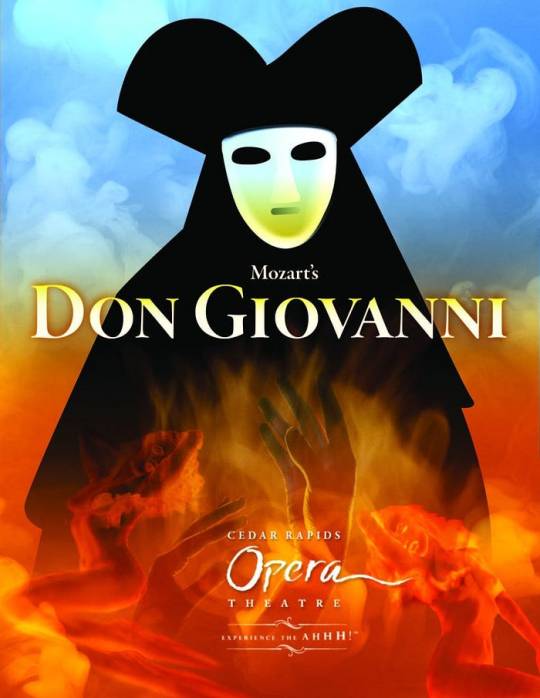
Don Juan personifica una leyenda sevillana que inspiró a Molière, Antonio de Zamora, Carlo Goldoni, Lorenzo da Ponte (autor del libreto de Don Giovanni de Mozart), …
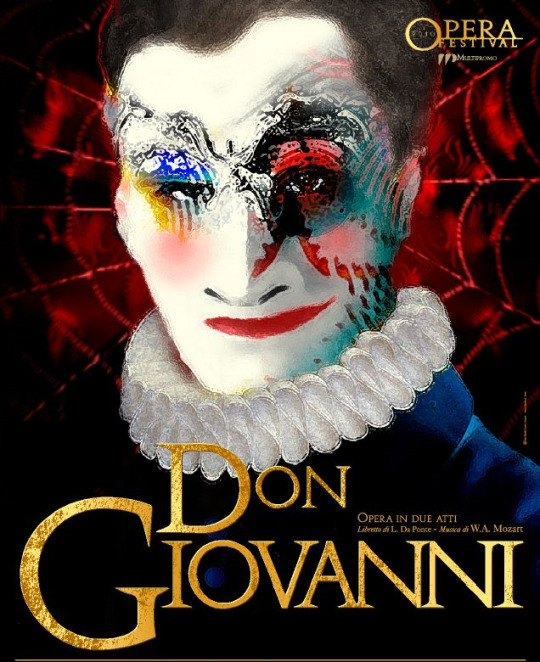
El libertino castigado o Don Juan (título original en italiano, Il dissoluto punito, ossia il Don Giovanni) es un drama jocoso en dos actos con música de Wolfgang Amadeus Mozart y libreto en italiano de Lorenzo da Ponte basado en la obra original El burlador de Sevilla y convidado de piedra de Tirso de Molina. Lleva como número KV 527. Se estrenó en el Teatro de Praga el 29 de octubre de 1787.5 El libreto de Da Ponte fue considerado por muchos en la época como dramma giocoso, término que denota una mezcla de acción cómica y seria. Mozart introdujo la obra en su catálogo como ópera buffa. Aunque a veces clasificada como cómica, mezcla comedia, melodrama y elementos sobrenaturales.

Como obra destacada del repertorio operístico estándar, aparece como el número siete en la lista Operabase de las óperas más representadas en todo el mundo,6 y la tercera de Mozart, después de La flauta mágica y Las bodas de Fígaro. La obra es una reelaboración del tema literario del Don Juan. Además de todas las reelaboraciones literarias y reflexiones filosóficas del tema en general, la ópera ha suscitado algunas recepciones literarias específicas.
La trama se desarrolla en Toledo (España).
(Don Giovanni — Wikipedia, la enciclopedia libre)
youtube
(649vid2) https://youtu.be/dYgryISgOkEDon Giovanni Mozart ópera completa subtitulada Abbado
… lord Byron, Espronceda, Pushkin, Zorrilla, Azorín, Marañón y a muchos otros autores. Es un libertino que cree en la justicia divina («no hay plazo que no se cumpla ni deuda que no se pague») pero que confía en que podrá arrepentirse y ser perdonado antes de comparecer ante Dios («¡Cuán largo me lo fiais!»). Si además recordamos que El burlador de Sevilla se publicó en 1630, podemos concluir que se trata de una obra cuya vocación es moralizante, y que podría haber sido concebida como respuesta a la teoría de la predestinación de Don Juan, según la cual la salvación y la entrada en el reino de los cielos ya ha sido determinada por Dios desde el nacimiento de uno, dado por gracia a través de Cristo y recibido solamente por fe, por lo que los actos no son determinantes para la salvación de las almas.
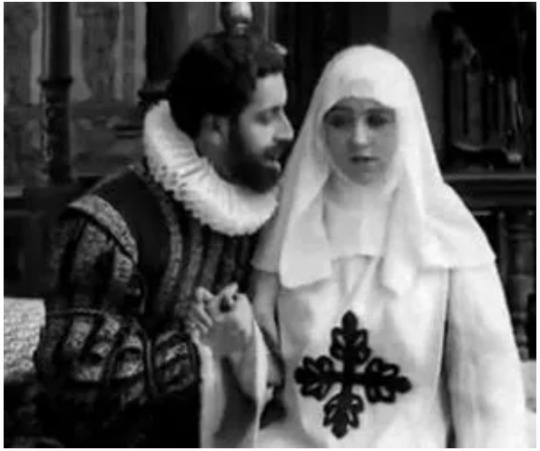
Se ha especulado mucho sobre la posible inspiración en un personaje real, y se ha señalado a Miguel Mañara como principal candidato. Sin embargo, si aceptamos la opinión mayoritaria respecto a la autoría y la fecha, no podrá considerarse el personaje de don Juan inspirado en la vida de Mañara, ya que este nació en 1627 y la obra se editó solo tres años después. Más aún, una versión precedente del Burlador, el Cuán largo me lo fiais, con el mismo argumento, podría datar de 1617.
youtube
(649vid3) https://youtu.be/3k76P7Wow9Y DON JUAN (1989). BNE HISTORIA. Ballet Nacional de España.
REF: 649
2 notes
·
View notes
Text
I don't even know who reads these but what if
El burlador de Sevilla y el convidado de Piedra but like len is el burlador and kaito is don Gonzalo 🤔 el convidado de piedra
In know what this would mean but think about it... the dinner scene... bro
0 notes
Text


Notas a pie de página en la versión impresa que leí del El burlador de Sevilla y convidado de piedra por Tirso de Molina.
0 notes
Text
[Quick translation of part of the opening scene of Tirso de Molina’s Burlador de Sevilla. Original here.]
***
DON PEDRO Seize him.
DON JUAN Who would ever dare? If, perhaps, my life be lost It will come at such a cost That the taker best beware.
DON PEDRO Kill him.
DON JUAN Let me say this plain: I am well resolved to die; Gallant gentleman am I. The ambassador of Spain Is the only worthy foe Who could take me.
DON PEDRO Leave us, all; To that room just down the hall, And the lady with you. Go.
[The others exit.]
Now we are alone, we two; Show your vim and valor here.
DON JUAN Though I have those, uncle dear, They will not be used on you.
DON PEDRO Speak your name.
DON JUAN You know the one. I’m your nephew.
DON PEDRO Oh, my heart, I fear treachery’s dark art! Enemy, what have you done?
#tirso de molina#el burlador de sevilla y convidado de piedra#shimyereh translates#this got itself stuck in my ear again this morning#and then a few lines translated themselves and I decided to just go for it!#it's a very swashbuckling opening
7 notes
·
View notes
Text
"pues veis que hay de amar a mar una letra solamente."
okay i take it back maybe it is actualy reasonable for Tisbea to be seduced that easily if somebody ever said that to me i would marry them on the spot
0 notes
Note
what are some crucial phrases/vocabulary words for discussing literature (especially in conversation as opposed to academia)? I know genres and things like gustar/preferir, but I’m not sure how to talk about themes, characters, etc.
This vocab list on Academic/Literary Spanish might help
I'll also include my list on Academic Spanish Words which will help in general, but especially if you ever have to write essays or talk more conversationally about things
Also - just some additional help...
el tema = theme / subject
el motivo = motif / motive, motivation / theme
la metáfora = metaphor metafórico/a = metaphorical
la alegoría = allegory alegórico/a = allegorical
el personaje = character
el arquetipo = archetype el arquetípico = archetypal [sometimes people use this as "quintessential" when talking about specific roles characters play]
el/la protagonista = protagonist
el héroe = hero la heroína = heroine
el/la antagonista = antagonist
el villano, la villana = villain
el concepto = concept
el escenario = setting / scenery
el argumento = plot
el resumen = summary
la sinopsis = synopsis, summary
el papel = role [when it's not "paper"] hacer el papel = to play the role
la meta = goal
el hito = milestone
el deseo = desire / wish
el obstáculo = obstacle la dificultad = difficulty
el reto = trial, adversity, challenge
el desafío = challenge
la recompensa = recompense / reward
el premio = reward / prize / award
And some common things that show up with characters:
simpático/a = nice, kind, sympathetic
antipático/a = mean, unkind
amable = friendly, loving
cariñoso/a = affectionate
heróico/a = heroic
malvado/a = wicked, villainous
cruel = cruel
solitario/a = lonely / solitary
el príncipe = prince el príncipe azul = "knight in shining armor"
el galán = "the leading man", "hero" / "a Casanova", "Don Juan"
un donjuán / un mujeriego = womanizer [un donjuán is taken from Don Juan Tenorio, a famous womanizer in Spanish literature (check out El burlador de Sevilla y el convidado de piedra by Tirso de Molina to see more about him)]
la princesa = princess
la damisela = damsel la damisela/princesa en apuros = "damsel in distress"
egoísta = selfish
altruista = selfless, altruistic
sabio/a = wise
listo/a = smart [with ser] inteligente = smart
tonto/a = foolish
distraído/a = distracted / absent-minded
ensimismado/a = "in their own little world"
orgulloso/a = proud
engreído/a = conceited
apasionado/a = passionate
honesto/a = honest sincero/a = honest, sincere
humilde = humble
caritativo/a = charitable, giving
compasivo/a = compassionate, kind
codicioso/a = greedy
envidioso/a = envious celoso/a = jealous
poderoso/a = powerful
fuerte = strong
débil = weak
estable = stable
inestable = unstable
solemne = solemn
adusto/a = dour, grim, serious
severo/a = strict, severe
perezoso/a = lazy vago/a = lazy holgazán, holgazana = "lazybones" [lit. "person who is idle" or "person doing nothing"]
sinvergüenza = "terrible person" [lit. "shameless" or "knowing no shame", but it's a generic insult for someone]
alegre = happy
triste = sad
enojado/a = angry
asustado/a = scared
da miedo = scary [conjugates with dar, so dan miedo is "they're scary"]
amante = lover amantes malhadados = star-crossed lovers [lit. "ill-fated lovers"] amantes/amores contrariados (por las estrellas) = star-crossed lovers
afortunado/a = fortunate con suerte = lucky tener (la) suerte = to be lucky
desafortunado/a = unfortunate sin suerte = unlucky
desgraciado/a = tragic / unfortunate
vidente = seer / sees the future
miope = short-sighted
la moraleja = moral (of the story)
fantástico/a = fantastic / fantastical, from a fantasy
romántico/a = romantic
épico/a = epic
trágico/a = tragic
realista = realistic
pesimista = pessimistic
optimista = optimistic
And some common themes in general:
el amor = love
el bien y el mal = good and evil
la moral = morality, morals
la pasión = passion
la amistad = friendship
la suerte = luck
la fortuna = fortune / luck
el hado = fate el destino = destiny
la tragedia = tragedy
la comedia = comedy
la ironía = irony
el dinero = money
la riqueza = richness / wealth
la pobreza = poverty
la guerra = war
la paz = peace
el orgullo = pride [or "hubris" when talking about Greek plays; it's the same translation in Spanish; more formally it could be la arrogancia or la soberbia]
la ira = anger, wrath
la codicia / la avaricia = greed
la envidia / los celos = jealousy
la venganza = vengeance, revenge
el asesinato = murder la matanza = killing, slaughter
la crueldad = cruelty
la magia = magic
Dios = God [masculine; los dioses are "the gods"]
la justicia = justice
el valor / la valentía = bravery, courage
la sabiduría = knowledge
la astucia = smarts, cunning, intelligence / wisdom
la profecía = prophecy el augurio / el presagio = omen / premonition
el tiempo = time
la historia = history
la memoria = memory
la verdad = truth
la mentira = lie
el engaño = deceit, lie, trickery
el pasado = past
el futuro = future
el sueño = (a) dream [as opposed to "sleepiness"]
la realidad = reality lo real = what's real lo irreal = what is unreal
la vida = life la vida cotidiana = daily life la vida tal y cómo es = "life exactly how it is" [as opposed to an ideal; la vida tal y cómo es shows up a lot in realism and shows the good bad and the ugly]
la muerte = death
la misericordia = mercy
el perdón = forgiveness la clemencia = forgiveness
el remordimiento, el arrepentimiento = regrets
la culpa / la culpabilidad = guilt / responsibility, "blame", "fault"
el castigo = punishment
la responsabilidad = responsibility
la resistencia = resilience / resistance
la promesa = promise
el juramento = oath, promise
You'll also see a lot of lo with general concepts. The lo is a way to make a noun out of an adjective, so it gets translated as "what's" or "the thing that"
As an example... lo cierto y lo falso is "what's true and what's a lie", but you could rephrase it as la verdad y la mentira "truth and lie"
But you'll commonly see lo with things like that, discussing major themes or things the author wants people to think about... such as lo ideal y lo real "what's ideal and what's real", as in "someone's perfect ideal vs what they're really like"
You'll also see versus and contra "against" used in contrasting statements
31 notes
·
View notes
Text
DOMINGO 29 DE MAIO DE 2022 : DE MANHÃ OPERA EM CASA COM O STREAMING DO 1o ACTO DE DIE WALKÜRE DA OPERA DE ESTUGARDA E DE TARDE TEATRO EM ALMADA COM UM CINTILANTE D.JUAN DE MOLIERE : um domingo que começou cinzento mas veio a ser gratificante . De manhã foi ocasião de ver o I Acto do streaming da Die Walkure da Opera de Estugarda . Esta produção é revolucionária por cada Acto ser encenado por um diferente director ! O primeiro foi concebido pelo Hotel Modern, uma companhia de teatro holandesa conhecida por produções com maquetes e sequências de animação. O grupo projeta um filme ao vivo - de um mundo minúsculo e destruído - como forma de dramatizar a história de Sieglinde e Siegmund, Pauline Kalker, do Hotel Modern reformula os personagens como ratos que sobreviveram a uma calamidade, e os cantores ocasionalmente usam e carregam máscaras de rato, enquanto as sequências do filme contam cenas de devastação e brutalidade. Okka von der Damerau estreia como Brünnhilde, Brian Mulligan assume o papel de Wotan e como Sieglinde e Siegmund, Simone Schneider e Michael König. Hunding e interpretado por Goran Juric. O diretor musical Cornelius Meister conduziu a orquestra .O melhor foi mesmo o nível músical. Não esqueçamos que o maestro é o convidado para inaugurar Bayreuth este ano! .

De tarde rumamos a Almada ao TMJB onde depois de levantar as nossas assinaturas para o 39o Festival assistimos ao D.Juan de Molière .Um regresso feliz ao teatro Azul da peça que havia sido apresentada em 2006 por Joaquim Benite . A encenação de António Pires é simplesmente brilhante e o desempenho dos actores excelente . Don Juan surgiu pela primeira vez por volta de 1630, com uma peça de Tirso de Molina (El Burlador de Sevilla y convidado de piedra) que apresentava o destino implacável de um homem dissoluto e imoral, incapaz do arrependimento. Foi nela que Molière se inspirou para escrever o seu Don Juan ou le Festin de Pierre, que haveria de se tornar uma das suas obras mais conhecidas. O espectáculo estreou-se no Palais Royal a 15 de janeiro de 1665. Escrita logo a seguir a Tartufo, uma peça na qual Molière fustigava a hipocrisia de alguns beatos, Don Juan parece fazer uma apologia da libertinagem. Ambicioso, mentiroso, sedutor, infiel, orgulhoso, insolente, Don Juan rejeita os valores cristãos dominantes na época e vai ainda mais longe ao recusar o arrependimento, mesmo na hora da morte. Algo incompreensível para o seu criado, Esganarelo, que recrimina o amo e chama a atenção para as consequências dos seus actos, como uma espécie de “consciência crítica” de Don Juan.
Encenação António Pires
Tradução Luís Lima Barreto, Fátima Ferreira
Cenografia Alexandre Oliveira
Figurinos Luís Mesquita
Música Paulo Abelho
Desenho de luz Rui Seabra
Interpretação Carolina Campanela (Elvira) ,Carolina Serrão(Carlota) , Catarina Vicente(Maturina), Francisco Vistas ( Gusmão , D. Carlos ) , Hugo Mestre (Alonso , Sr Domingos), , Jaime Baeta( Don Juan) , João Barbosa (Esganarelo) , Luís Lima Barreto ( Don Luis , Estátua do Comendador , Mário Sousa ( Pedrito , Pobre).
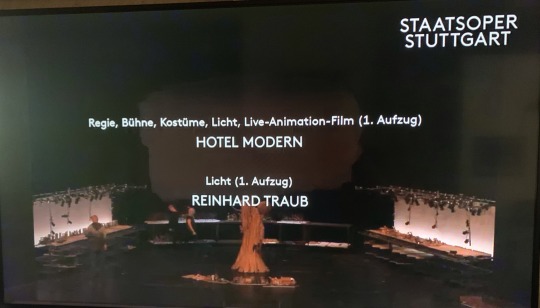
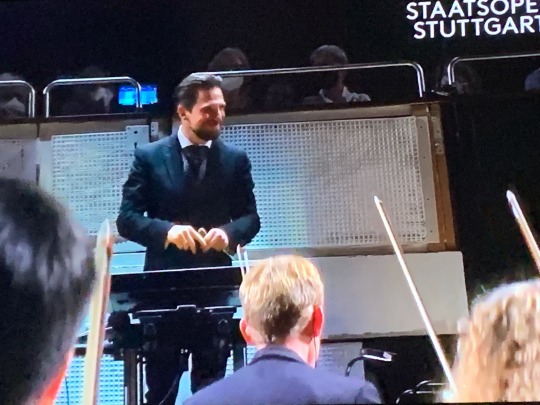

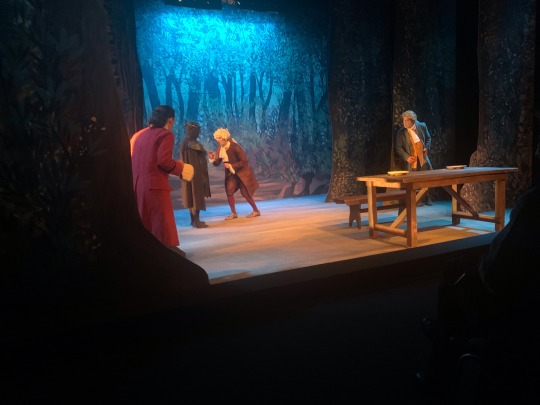
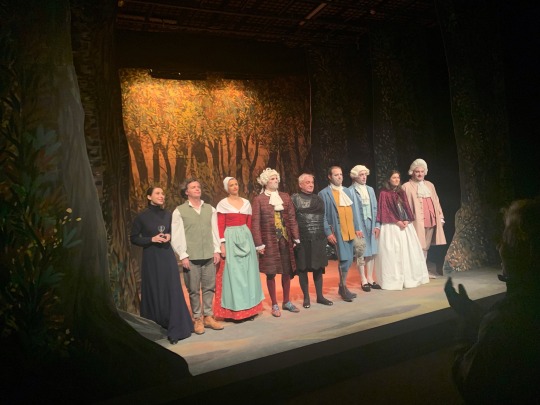

0 notes
Quote
MANUSKRIPT til Dónde está el Don? STARTE MED FESTIVAL Los Gitanos de la Cava (Bulerias) - Pansequito Vest – cláp Guitarra Dress - Flamenco, smid vesten APLAUDIR – CLAP Dale dale dale Venga Olé olé ÅBENT LYS QUE Bienvenidos señoras y señores Por favor – tomen asiento Yo soy don juan tenorio y acabo de regresar de sevilla perdon perdon – ¿hablas usted español? entiendes usted español? No? Habla danés? Si danés. Vale Haré esto en danés. VELKOMMEN – som sagt hedder jeg Don Juan Tenorio og jeg er lige kommet tilbage fra Sevilla. Lad mig fortælle jer, det har været exceptionelt at være tilbage i min hjemby. Jeg har været forbi El Barrio Santa Cruz, mit gamle kvarter hvor jeg er vokset op, og gæt engang, de har sat en rigtig flot statue op af mig (hvor jeg står sådan her). Meget adeligt. Det var fornøjeligt at se. Sevilla har aldrig været smukkere. Fyldt med appelsintræer, den smukkeste arkitektur og de smukkeste omgivelser. Og når jeg siger omgivelser, så mener jeg kvinder. Selvom det er november måned, så er der stadigvæk tilpas varmt nok til at kvinderne har lårkorte nederdele på. Åh – hvilken fryd det har været for mine øjne. De så så dejlige ud og igennem de blikke jeg fik, ku jeg tydeligt mærke at de længe ikke havde set en rigtig mand som mig. Jeg ku mærke af at der var noget i deres underliv som… spirede. Jeg fik en følelse af at jeg endelig var… genforenet med min mark og var klar til at malke hver evig eneste yver jeg ville finde på min vej… men så en aften, tog jeg forbi en bar, bar Bulebar. Det var her… jeg mødte hende... Señorita Castaño. Jeg fik øjenkontakt med hende og jeg siger jer, jeg følte mit hjerte skippede et slag… aldrig har jeg vidnet så smukt og graciøst et væsen… Hvem var hun? Jeg ville introducere mig selv, men var pludselig i tvivl. Men hvad skal jeg sige? Hvorfor er jeg i tvivl – Det plejer ja da nemt at kunne finde ud af. *knips* jeg spørger hende selvfølgelig efter en cigaret. Jeg gik op til hende og sagde. Yo quiero un cigarette por favor Hun svarede quieres decir, quiero un cigarillo por favor. Ehm si… Jeg fortsatte… jeg lagde mærke til dig fra det første øjeblik du trådte ind. De smukkeste øjne jeg længe havde set, gemt bag de grimmeste briller jeg nogensinde havde set. Det mørke krøllet hår og de glitrende smukke saftige læber, som var blevet smurt af den rødeste stift. Lo siento, no entiendo sagde hun. Så jeg tog hendes briller af Og måtte finde en anden måde at udtrykke mig på. DÆMPET SPOT LYS QUE GUITAR Voks dig petit og feminin, min pige. lad mig se dit potentiale, for du er, min pige Du ved jeg afskyr kvinder der ikke tør. turd dit liv. vov dit liv. Turd vov dit liv. vov dit hjerte for og begiv dig ud på eventyr, min pige jeg falder for dig min elskede. Tag min hånd og smelt ind i mit hjerte. blot blot din hals og lad mig kysse din nakke nænsomt, så hårene velfortjent kan få lov til at strække sig i vildrede. ÅBENT LYS QUE Dagen efter trådte jeg ind på mit gamle stamsted, El Paco og det første jeg fik øje på var den dejligste lille petit servitrice jeg længe havde set. Jeg lagde mærke til at hun lagde mærke til mig og hun lagde mærke til at jeg lagde mærke til at hun lagde mærke til mig. Hun smilte til mig og jeg gengældte. Mercedes stod der. Jeg satte mig ned sagde til hende jeg vil ha det sædvanlige og hun sagde vale Señor. Der gik ikke mere end 7 minutter, så dukkede hun op med en macchiato, friskpresset appelsinsaft og et blødkogt æg. Jeg spurgte hende hvordan hun vidste det var min sædvanlige. Hun svarede, Du er en legende, Señor Juan. LARS HUG BACKWARDS INSTRUMENTAL – skrues ned Jeg spurgte hende hvad hun skulle i aften. Hun vidste det ikke, så jeg planlagde hendes aften for hende… DÆMPET LYS QUE??? Den smukkeste hjort i skoven har lige efterladt sin familie. Den går galant videre ind i hjertet af det grønne. Dufter og sniffer på sin vej. Jeg iagttager det elegante dyr på afstand, igennem en sprække. Den opfanger pludselig en lyd i det dybe og kigger op med de klareste dådyrøjne, som skærer igennem gran og træ. Et blik som ikke sparer på kræfterne. Aldrig i mit liv har jeg set så uhyre smukke grønne øjne før. se hesten Den traver pludselig videre som var det en hest. Hvad er det du prøver at bilde mig ind? Kom an din tyr. Dans med rødt lagen og smid skjorte SAMME LYS QUE? Sex: Ned med benene – langsomt ned og op på albuer… også eskalerer. 5 vejrtrækninger, 1 stort For at forklare næste scene som omhandler Isabella, har jeg brug for en kvindelig stikordsgiver. S T A R T D I A L O G SCENEN STARTER NÅR MUSIKKEN KOMMER PÅ DON GIOVANNI MOZART DON JUAN: Jeg må videre ISABELLA: Skal du gå, Octavio? DON JUAN: Ja, men jeg sværger, jeg er din skønjomfru ISABELLA: og alt hvad du har lovet mig, vil gå i opfyldelse? DON JUAN: Ja. ISABELLA: Ethvert ønske, enhver drøm, ethvert begær vil blive opfyldt? DON JUAN: Vi gifter os, det har jeg svoret. Hvor er døren? ISABELLA: Vent mens jeg henter lys. DON JUAN: Lys? Hvorfor lys? ISABELLA: Så jeg kan se det ansigt jeg skal leve med alle mit livs dage. Min elskede – lad mig blot hente et lys. DON JUAN: Hvis du gør det stikker jeg det skråt op! ISABELLA: Hvad. Skam dig for et råt sprog. Octavio! – - (Dramatisk pause) Hellige guds moder! – hvem er du? DON JUAN: Un hombre sin nombre. En mand uden navn. ISABELLA: Hertug Octavio er blid – det er du ikke! VAGTER VAGTER! En tyv! DON JUAN: Isabella, vær nu stille. ISABELLA: HJÆLP! Arrester ham! DON JUAN: Hold nu op, min elskede. ISABELLA: Rør mig ikke – SJOFLE DYR! BRUG FOR EN MANDLIG TIL AT HJÆLPE FRA NU DON PEDRO: Hvad foregår der her? DON JUAN: Hvad tror i? En mand, en kvinde, nøgne i mørket. Siger det jer noget? ISABELLA: Åh nådige gud. Grib ham! DON JUAN: Prøv. Hvem kommer først? Mit liv er ikke billigt. Hvem vil betale prisen? ISABELLA: Dræb ham. – Hun bliver siddende. DON JUAN: Jeg dør gerne – en ærefuld død. Jeg er en spansk adelsmand. Tilknyttet ambassaden. Det sikrer mig retten til at tage jer en for en i tvekamp – kom an. (TAGER SVÆRD) DON PEDRO: Så unge mand. Så er det mig og dig. Lad os se hvor hård du egentlig er. (TAGER SVÆRD FREM) DON PEDRO TAGER SVÆRDET FRA KURVEN OG CIRKULERER RUNDT OM PODIET. DON JUAN: Jeg er så hård som sten. Jeg kunne kværne dig til støv, onkel. DON PEDRO: Hvad er dit navn? DON JUAN: Som sagt. Jeg er din nevø. (tager maske af) DON PEDRO: Letsindig hvalp! Kom med en forklaring. Hvordan kom du ind i paladset? Og lad mig høre sandheden, for hvad du end siger er du død. DON JUAN: Kære onkel, engang var du på min alder. Fortæl mig ikke du aldrig forelskede dig. Hvis du husker hvordan det føltes. Den desperate sult. Så vil du måske forstå jeg løb den risiko. Sandheden er at jeg kom herind i forklædning og tog hertuginde Isabella. DON PEDRO: Hold inde – jeg ønsker ikke at vide mere. Hvis kongen hører det her, er jeg færdig. Du lavede det samme nummer hjemme i Danmark! Var én adelsjomfru ikke nok? DON JUAN: Men du er min fars bror. Mit blod er dit, gør med det hvad du vil. Slå mig ihjel og få det hele ud af verden. (på knæ og blotte mit bryst) DON PEDRO: Op og stå. Det nytter ikke noget. Men du har ret, vi er slægtninge. Og det er sandt, jeg var engang som dig. Men hvis det var mig, ville jeg have været modigere, jeg ville ha klatret op til den balkon og for længst have været over muren…. DON JUAN: Jeg er en god klatrer DON PEDRO: Jamen kom så i gang med at klatre. Afsted, skjul dig! DON JUAN: Det er udelukkende min fejl vi sådan er i klemme Onkel. Jeg er frygtelig ked af det. DON PEDRO: Din synd er at være ung, Don Juan. Tag nu og spring. Og gud være med dig. *Don Pedro bliver stående* ÅBENT LYS QUE Gi en kæmpe hånd til mine 2 stikordsgivere I VILDREDE STREETS OF SEVILLA NOISE I mellemtiden stak jeg af. Jeg ringede til Luca og mødte drengene. Dani, Hadrian & Constantin. De stak en flaske i hånden på mig og sagde Tranquillo Juan. Glem det. Det kan ske selv for den bedste. Men jeg var ligeglad. Det burde ikke ske for mig. Requiem in D Minor, K. 626: 3. Sequentia: Lacrimosa Klokken var 4 om morgenen. Vi stod på gaden ved Alameda de Hércules. Vi var alle spritstive, og drengene spillede flamenco og skrålede. Men jeg var rasende. Hvad var der galt med mig. Hvordan kunne det gå så galt? Aldrig før er jeg blevet gennemskuet. Hvad skete der derinde!? ARHHHH - hvad er det for en smerte jeg mærker. Det gør så ondt! Hvad er det for et stik jeg mærker i mit hjerte. Hvilket djævelsk stik! Smerten er ulidelig! Hvad er det her Savn jeg føler! Denne længsel. Længsel efter hvad, kærlighed? Ayudame por favor! ! ! Åhh mit dystre hjerte. FJERN DET FRA MIG JEG VIL IKKE HA DET TEXT MESSAGE SOUND Også skete det. Hun skrev til mig 12th (bonus part I) TEXTING SOUND Jeg sagde til hende hun skulle komme og få en øl med mig. Hun sagde hun lå i sin seng. Jeg sagde fint, hop ud og kom. Hun sagde det er for koldt udenfor Jeg sagde tag en jakke på Hun sagde jeg ligger allerede i min seng Jeg sagde jeg giver dig min jakke så, bare kom. Hun sagde det var for langt væk Jeg sagde fint jeg kommer til dig. Hvor bor du? Hun sagde kun på én betingelse. Kun hvis du spiller for mig GUITAR LYS Med glæde min elskede SPOT LYS QUE GUITAR 12th (part II) Jeg spillede spillet med min venstre, selv det, er noget jeg ku mestre lod dine veninder gøre grin med mig og jeg fattede nada. Men alle hyggede sig, selv mig da Du sagde til mig du er skuespiller, jeg sagde i lige måde. Du fortalte mig du ik fattede mig, jeg sagde yo también. Jeg sagde til dig, tu esta muy bonita. du rettede mig og sagde eres muy bonita. Som var det dig selv du komplimenterede. Jeg gav slip på dig den aften, som gav jeg slip på en boomerang… vi ses snart igen min elskede. Men vinden er statisk her i Sevilla, så du vendte tilbage hurtigere end forventet. GUITAR 12th (part III) Ind i arenaen trådte el toro de Seville. Den hidsigeste tyr jeg nogensinde har stirret på. Kappen i min hånd var rød som blod og den blafrede i den ikke eksisterende vind. Noget var på færde. Jeg kneb mine øjne sammen og vi træk begge vejret tungt og forpustet. Under hver udånding kunne man nærmest se heden stige ud af vores næser. Tyren satte an og lige inden det første stød, blev karambolagen forstyrret af Lana. Lala la Gata. Der lå vi. Klar til kattemassage. GUTIAR JEG ELSKER DIG, MEN IKKE MERE END DET
The manuscript for Dónde está el Don? performance
Dialogue from Tirso De Molina - Tragedie El burlador de Sevilla y convidado de piedra (1630)
0 notes
Link
El “convidado de piedra” es un personaje de larga tradición en la literatura folclórica europea. En España se asocia al mito de don Juan, libertino e irreverente, plasmado en la clásica obra de Tirso de Molina, El Burlador de Sevilla y convidado de piedra (1630), en la que es condenado al infierno, y en la no menos clásica Don Juan Tenorio (1844), de José Zorrilla, en la que es salvado del infierno por el amor de doña Inés.
0 notes
Text










Extractos de El burlador de Sevilla y convidado de piedra por Tirso de Molina.
0 notes
Note
To add a bit more, the Don Juan Triumphant is based off directly from a classical Spanish piece of literature called "El Burlador de Sevilla y el Convidado de Piedra" ("The Trickster of Seville and the Stone Guest", but also known as "Don Juan", for short). It tells the 'adventures' of Don Juan Tenorio, a man known for tricking and seducing every woman he desires and betraying the friendships and trusts pf every man. Since he's a nobleman, he knows nothing will ever happen to him, so he goes off doing a lot of harm to many people around Spain.
The excerpt we see in PoTO is a fragment of the play in which Don Juan wears other man's clothes to trick Doña Ana (in PoTO the name was changed to Aminta, who is another woman who also gets tricked into sharing a bed with Don Juan, but is tricked differently. Idk why the need to mix up the names) into believing Don Juan is her lover.
Strangely enough, Passarino (who is called Marqués de la Mota in the original play) agrees to help Don Juan to seduce Doña Ana/Aminta, when in the original play Don Juan borrows the Marqués clothes with the excuse of going for s cheap/free prostitute (which Passarino/Mota recommends, btw). Passarino lends Don Juan his clothes for him to trick the prostitue into believing it is Passarino and not charging Don Juan for her services, but Din Juan, being the little shit he is, goes instead to Aminta/Doña Ana, who is waiting for Passarino/Mota to give him the "proof of love".
Don Juan had early received a letter written by Aminta/Ana (and delivered by her maid), instructing Passarino/Mota to wear certain clothes to be able to recognize him in the dark when he get to her house. Don Juan, of course, reads the letter and tells the message to the Marqués/Passarino, but changing the hour. He then borrows the clothes and blah blah, you can guess what happens next.
Assuming it is the same play, poor Erik is truly a masochist if he sees himself as Don Juan. At the end, Don Juan gets dragged to hell by the vengeful stone statue of Ana's father, whom Don Juan had killed in a duel when the father was trying to venge his daughter's honor.
(Funny thing is, Don Juan would have either way gotten Ana at the end, because she was his fianceé, he just didn't know yet).
(Who would know Erik's true fantasy was to get laid with half a country's female population and later get punished by the eternal flames [and his father in law] for it? And here we were us believing he wanted a stroll on sunday)
What’s the plot of the mock operas? The plot of Hannibal, II Muto, and Don Juan Triumphant. I think I get a grasp of it but a bit confused on certain details especially Don Juan Triumphant where the ensemble/chorus cast + Carlotta is singing and bolt out when they saw that Piangi and Meg had come out. Same goes for II Muto? Is there any reason why there is a ballet of country nymphs?
Well, the mock operas are, as you might have guessed, mock, existing mainly to get important parts of the plot going. Therefore, the details will always be fuzzy - the operas exist to further the story of POTO and give an idea of what historical operas looked and felt like, not as complete stories on their own. However, we also know that they are pastiches of existing operas, and there’s some details in the libretto, and that can help to figure out parts of the plot. And if you go to this link, you’ll see that fans have already done so, but to summarize quickly…
Hannibal is based off the opera Aida, and is probably a very fictionalized account of the historical Hannibal, a general who fought against Rome in the Punic Wars. Carlotta/Christine would play his (probably also fictional) lover, the (fictional) Elissa, Queen of Carthage. The opera would likely be about his life, rise to power, love affair and the battles against Rome (’Think of Me’ might fall here, with Elissa pining for him when he’s away), reuniting with Elissa before a big battle and the journey over the Alps (this is where we are dropped in with Carlotta and Piangi and that giant elephant prop), then ending with Hannibal’s defeat and death.
Il Muto is supposed to be a comedy based on The Marriage of Figaro. We don’t really get as much sense of the plot, but we do know it involves a (presumably young and pretty) Countess, married to Don Attilio, who suspects (rightly enough) that she’s having an affair with a pageboy, and they all sort of run around trying to trick each other and playing dress up and generally being kind of confusing but humorous.
The ballet of the country nymphs is a historical touch; operas of that time period did indeed have pointless ballets inserted into their operas, to show off the pretty ballerinas to the patrons. Its connection to the plot would be tenuous at best (the fact that it’s about frigging nymphs may very well be a nod to how random the ballets were), though given the opera seems fairly ridiculous already, it is fun trying to contrive a way to fit it in.
Don Juan Triumphant is based off the opera Don Giovanni, and we see a bit more of it than Il Muto - a rehearsal scene where Aminta appears to reject Don Juan, and ‘Point of No Return’, which is said to be the final scene of the opera. The plot, based on the linked post above, likely starts with an attempted seduction of Aminta and her rejection of Don Juan (this is where the rehearsal scene appears), then Don Juan coming up with a plan with Passarino to seduce her, leading to ‘Point of No Return’ and Aminta succumbing to him. The scene takes place at Don Juan’s home, so I’d guess the ensemble at the beginning are his servants, acting as a chorus for the audience.
Interestingly, the restaged tour adds a couple details to this opera in the sitzprobe scene; Christine is more overt in rejecting and/or condemning Don Juan, pointing at him in an accusatory manner, while Don Juan is seen wearing manacles. I’m really not knowledgeable enough about the Don Juan legend or the various operas/plays based off of him to know what this means, but it does seem to indicate that Don Juan was caught / arrested / imprisoned at some point; perhaps he escaped and that gives him another reason to be hooded and in disguise when he seduces Aminta.
One more thing to keep in mind is that the Phantom very probably wrote this self-insert fic opera as a metaphor for what he hopes to happen with Christine; ‘Point of No Return’, where Aminta is seduced by Don Juan, is meant to also be Christine succumbing to the Phantom. You can imagine that in the Phantom’s idealized fantasy, Christine would perform with him and lo, fall in love with the Phantom and his awesome music and willingly goes off with him as the opera ends to, I dunno, a marriage that doesn’t involve kidnapping and blackmail.
#phantom of the opera#don juan triumphant#real Don Juan#El burlador de sevilla#i love spanish literature#you bet I was fangirling while reading#Erik's furstrated dream#his fantasy wasn't so innocent after all#Don Juan was an awful person#explaining Don Juan
80 notes
·
View notes
Text
”Faimoasa comedie” a maestrului Tirso de Molina, ”Seducătorul din Sevilla şi Oaspetele de piatră”. la Teatrul Național Radiofonic
”Faimoasa comedie” a maestrului Tirso de Molina, ”Seducătorul din Sevilla şi Oaspetele de piatră”. la Teatrul Național Radiofonic
Vineri, 14 iulie 2017, pe site-ul eteatru.ro la ora 4.00 și în reluare la ora 16.00 vă invităm ă ascultați spectacolul ”Seducătorul din Sevilla şi Oaspetele de piatră” de Tirso de Molina. Traducere de Aurel Covaci. Adaptare radiofonică de Costin Tuchilă. Regia artistică: Leonard Popovici. În distribuţie: Adrian Pintea, Constantin Codrescu, Mircea Constantinescu, Ion Chelaru, Mihai Dinvale,…
View On WordPress
#Adrian Pintea#Alexandre Dumas-tatăl#Alexandru Ciprian#Alexandru Demetriad#Alexandru Kiriţescu#Anne-Marie Ziegler#Aurel Athanasescu#Brecht#Byron#Constantin Bărbulescu#Constantin Codrescu#Costin Tuchilă#Cristina Chirvasie#cultură#Dem. Savu#Don Diego Tenorio#El burlador de Sevilla y convidado de piedra#Eugen Cristea#Francisco de Quevedo#George Iliescu#Ion Chelaru#Ion Ciprian#Ion Pavlescu#Jeanine Stavarache#Juan Ruiz de Alarcón y Mendoza#Leonard Popovici#Lope de Vega#Luis de Góngora y Argote#Marieta Deculescu#Mérimée
0 notes
Text
tisbea what a woman you are
#you should punch don juan in the face and end up with me#erins cryptic ramblings#el burlador de sevilla y el convidado de piedra
0 notes